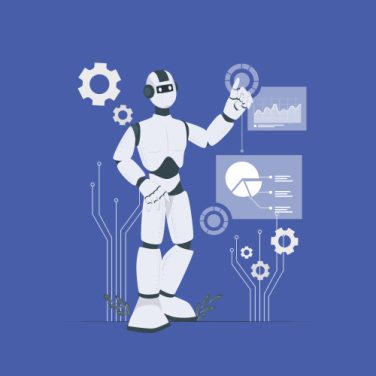Employee lifecycle analytics integrates data from recruitment, onboarding, development, retention, and offboarding to provide end-to-end visibility into workforce dynamics.
By harnessing data-driven employee lifecycle insights, HR teams can predict trends, identify risks, and optimise experiences at each stage. These analytics draw from diverse sources such as HRIS, payroll, engagement platforms, and learning management systems to deliver a holistic view of employee journeys.
In recruitment, lifecycle analytics examines time-to-hire, source efficacy, and candidate funnel conversion rates. During onboarding, it tracks completion rates, early performance indicators, and assimilation success.
For development and performance management, data-driven employee lifecycle reports highlight competency gaps, training ROI, and productivity patterns.
Finally, in offboarding, HR analytics for employee lifecycle evaluates exit trends, sentiment data from surveys, and alumni engagement metrics.
Strategic value emerges when organisations leverage employee lifecycle analytics to forecast attrition hotspots before they materialise.
Predictive attrition models, powered by MiHCM Data & AI, can flag at-risk employees, enabling proactive interventions such as targeted recognition or tailored development plans. Integrating lifecycle analytics with payroll and HRIS data also refines workforce planning and budgeting, ensuring headcount forecasts align with strategic objectives.
The power of a data-driven employee lifecycle approach lies in its ability to inform decision-making across functional silos. When talent acquisition, learning and development, and retention specialists share a unified analytics platform, insights flow seamlessly.
This cross-functional collaboration accelerates time-to-productivity, enhances engagement, and reduces turnover.
Throughout this blog, readers will explore actionable strategies and real-world examples that demonstrate how to leverage employee lifecycle analytics effectively.
From defining key performance indicators to selecting the right tools and implementing predictive models with MiHCM Analytics and SmartAssist, the path to data-driven employee lifecycle management begins here.
Key metrics in employee lifecycle analytics
To drive impactful employee lifecycle analytics, organisations must track a defined set of Key Performance Indicators (KPIs).
Below is a table summarising critical metrics, followed by detailed bullet points outlining their significance and application in a data-driven employee lifecycle strategy.
| Metric | Description |
|---|---|
| Time-to-Hire | Measures speed of recruitment and funnel efficiency, enabling optimisation of sourcing channels. |
| Onboarding Completion Rate | Tracks percentage of new hires who complete orientation and training within a set timeframe. |
| Performance Scores & Trend Analysis | Monitors productivity patterns, highlights top performers, and identifies areas needing development. |
| Tenure & Turnover Rate | Calculates average employee tenure and attrition percentages to pinpoint retention challenges. |
| Engagement & Pulse Survey Scores | Quantifies sentiment, well-being, and inclusion levels across teams and demographics. |
| Training ROI | Assesses learning programme impact by correlating training hours with performance improvement. |
| Attrition Risk Score | Employs predictive analytics to flag employees at risk of leaving, based on tenure, engagement, and feedback. |
- Time-to-Hire: Track cycle time from job posting to offer acceptance; compare performance across sourcing channels for budget reallocation.
- Onboarding Completion Rate: Monitor task completion, manager check-ins, and peer mentorship effectiveness; integrate data with employee-lifecycle-management-the-ultimate-guide for best practices.
- Performance Scores & Trend Analysis: Use continuous rating data and trend visualisation to identify high-potential talent and inform promotion decisions.
- Tenure & Turnover Rate: Segment turnover by department, role, and manager to detect hotspots; apply targeted retention strategies via MiHCM Data & AI dashboards.
- Engagement & Pulse Survey Scores: Leverage frequent micro-surveys and sentiment analysis to detect dips in morale and drive timely well-being initiatives.
- Training ROI: Combine learning management system data with performance metrics to calculate ROI; justify L&D investment through clear performance uplift.
- Attrition Risk Score: Implement machine learning models in Analytics module to flag at-risk individuals; trigger SmartAssist alerts for proactive manager outreach.
Selecting the right analytics platform
Organisations seeking robust employee lifecycle analytics must evaluate platforms against key criteria:
- Data integration: The ideal solution consolidates data from HRIS, payroll, engagement, learning, and external sources without siloed interfaces.
- Predictive modelling: Advanced analytics tools offer built-in machine learning algorithms to forecast turnover, performance, and career progression.
- Real-time visualisation: Interactive dashboards should deliver up-to-the-minute insights, enabling on-the-fly analysis of recruitment funnels, performance trends, and retention signals.
- Ease of use: Intuitive interfaces, drag-and-drop reporting, and natural-language query capabilities empower HR teams to self-serve analytics without IT intervention.
MiHCM solutions
- A unified platform integrating employee lifecycle management with workforce demographics insights and predictive performance models.
- Customisable dashboards, ad-hoc reporting, and data connectors across HRIS, payroll, and engagement platforms.
- Drag-and-drop KPI widgets for recruitment, onboarding, performance, and retention.
- Custom metrics configuration to align with organisational objectives.
- Ad-hoc reporting powered by a semantic data layer, eliminating manual data preparation.
- Automated insights and AI-driven decision support. Monitors key metrics and sends real-time alerts for at-risk employees, compliance issues, and productivity dips.
How analytics optimise recruitment and onboarding
Analytics-driven recruitment transforms hiring by prioritising candidate quality, predicting success likelihood, and streamlining the funnel. Key approaches include:
- Candidate quality scoring: Use machine learning models to score applicants based on resume attributes, assessment results, and cultural-fit indicators. High-scoring candidates receive fast-track assessments.
- Sourcing channel analysis: Measure cost-per-hire, time-to-fill, and quality-by-source. Allocate budget toward channels yielding the highest quality candidates.
- Pipeline bottleneck detection: Visualise drop-off points in the candidate funnel—application, screening, interview, offer—to refine processes and improve conversion rates.
Onboarding insights:
- Milestone tracking: Monitor completion of orientation tasks, compliance training, and job-specific skill development. Identify new hires falling behind to provide targeted support.
- Early performance indicators: Analyse first-30-, 60-, and 90-day performance metrics to forecast retention and adjust onboarding curricula.
- Sentiment analysis: Leverage engagement survey data to measure new-hire satisfaction and sense of belonging. Intervene with manager check-ins if sentiment scores dip.
Leveraging data for performance and retention
Data-driven employee lifecycle strategies extend beyond hiring to sustain performance and reduce attrition. Key tactics include:
- Workforce segmentation: Break down demographics by role, tenure, location, and manager to uncover productivity drivers. MiHCM Data & AI’s workforce demographics insights enable granular segmentation at scale.
- Performance-engagement correlation: Overlay performance scores with pulse survey results to identify motivational factors. High performers with low engagement may need recognition boosts or workload adjustments.
- Early warning attrition models: Build predictive models using tenure, engagement, sentiment analysis, and manager feedback. SmartAssist alerts managers to intervene before voluntary exits occur.
- Recognition impact analysis: Measure performance uplift following reward and recognition programs. Use uplift modelling to quantify programme ROI and refine incentive structures.
- Continuous feedback loops: Implement monthly pulse surveys and feedback platforms to capture real-time sentiment. Analyse trend data to sustain engagement and prevent burnout.
Combining these approaches creates a closed-loop retention system where interventions are data-informed, timely, and targeted. By leveraging HR analytics for employee lifecycle management, organisations can enhance workforce productivity and maintain high engagement levels.
Future trends in employee lifecycle analytics
- Real-time analytics & mobile HR intelligence: On-the-go dashboards and mobile notifications empower managers to act on insights immediately, whether in the office or remote.
- AI-driven prescriptive recommendations: Beyond forecasting, advanced machine learning will recommend specific actions—such as targeted training or recognition—to optimise outcomes.
- Holistic well-being metrics: Organisations will incorporate mental health and work-life integration indicators into employee lifecycle analytics, offering a more comprehensive view of workforce health.
- Career pathing & internal mobility models: Predictive models will forecast optimal career transitions, supporting internal mobility and succession planning.
- Ethical data practices & privacy: As analytics deepen, maintaining trust through transparent data governance, privacy safeguards, and employee consent mechanisms will be paramount.
By staying ahead of these trends, HR leaders can ensure their data-driven employee lifecycle strategies remain effective, responsible, and aligned with evolving workforce expectations.



